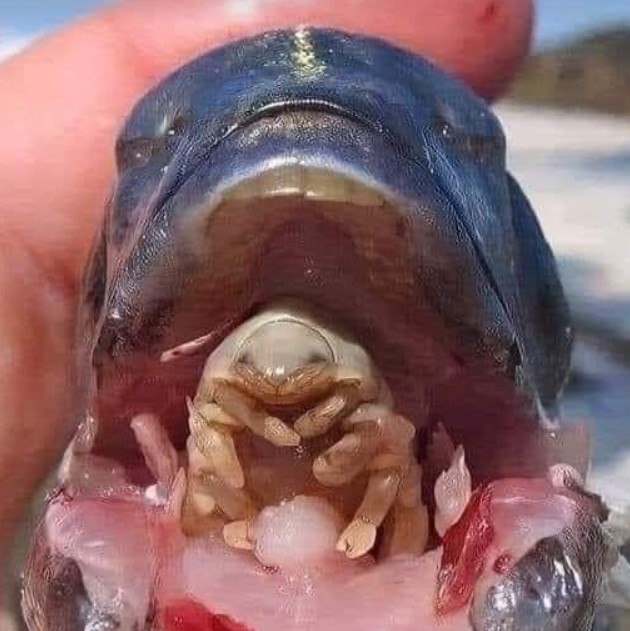Cymothoa exigua, or the tongue-eating louse, is a parasitic isopod of the family Cymothoidae. It enters fish through the gills. The female attaches to the tongue, while the male attaches to the gill arches beneath and behind the female. Females are 8–29 mm (0.3–1.1 in) long and 4–14 mm (0.16–0.55 in) wide. Males are about 7.5–15 mm (0.3–0.6 in) long and 3–7 mm (0.12–0.28 in) wide. The parasite severs the blood vessels in the fish’s tongue, causing the tongue to fall off. It then attaches itself to the remaining stub of tongue and the parasite itself effectively serves as the fish’s new “tongue”.
exigua is quite widespread. It can be found from the Gulf of California southward to north of the Gulf of Guayaquil, Ecuador, as well as in parts of the Atlantic. It has been found in waters from 2 m (6 ft 7 in) to almost 60 m (200 ft) deep. This isopod is known to parasitize eight species in two orders and four families of fishes—seven species of order Perciformes: three snappers, one species of grunt, three drums, and one species of silverside: one grunion. New hosts from Costa Rica include the Colorado snapper and Jordan’s snapper.
In 2005, a red snapper parasitized by what could be C. exigua was discovered in the United Kingdom. As the parasite is normally found south of the Gulf of California, Mexico, this led to speculation that the parasite’s range may be expanding; however, the isopod possibly traveled from the Gulf of California in the snapper’s mouth, and its appearance in the UK was an isolated incident.
Many species of Cymothoa have been identified, and only cymothoid isopods are known to consume and replace the host’s organs.
Other species of isopods known to parasitize fish in this way include borbonica and Ceratothoa imbricata. Different cymothoid genera are adapted to specific areas of attachment on the host. This includes scale-clingers, mouth- or gill-dwellers, and flesh-burrowers.
What you see in the pictures is a parasite called (Cymothoa exigua) This parasite enters the fish through the gills and then cuts the fish’s tongue and becomes the new tongue, and thus takes over every food that the fish gets. Once this happens, the fish becomes just a container to contain, nurture and feed the parasite until the fish dies of starvation and the parasite completes its task with a new victim.. Sometimes the fish asks for help from one of the cleaned shrimp called “Pederson shrimp”, who plays the role of a rescuer and extracts the parasite and kills it immediately!
